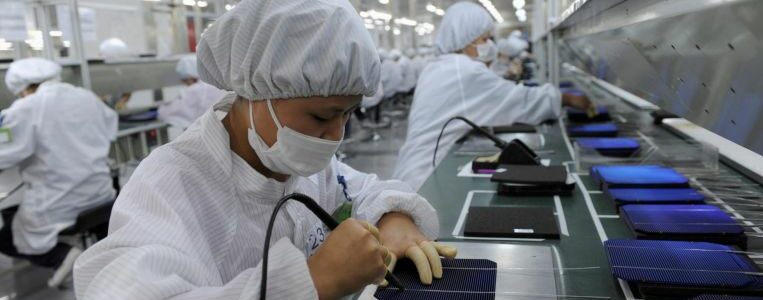
China’s producer prices surge by most in over 3 years
BEIJING (REUTERS) – China’s factory gate prices rose at the fastest rate in three and a half years in April, official data showed on Tuesday (May 11), as the world’s second-largest economy continued to gather momentum following record-setting growth in the first quarter.
The producer price index (PPI), a gauge of industrial profitability, rose 6.8 per cent from a year earlier, the National Bureau of Statistics said, ahead of a 6.5 per cent rise tipped by a Reuters poll of analysts and a 4.4 per cent rise in March. The consumer price index (CPI), however, rose a modest 0.9 per cent.
Investors globally are increasingly worried that pandemic-driven stimulus measures could spark a rapid rise in inflation and force central banks to raise interest rates and take other tightening measures, potentially holding back economic recovery.
“Price surges have spread to mid-stream products, and will continue to affect mid-stream and downstream merchandise, driving an increase in costs for the whole society,” said Hu Yanhong, an analyst at Yingda Securities.
“It could become an obstacle to the economic advances.”
Chinese authorities have repeatedly said they will avoid sudden policy shifts that could derail the recovery, but are slowly normalising policy and clamping down on property speculation in particular.
The sharp jump in producer prices included an 85.8 per cent surge in the oil and natural gas extraction sector from a year ago, while the melting and processing of ferrous metals rose 30 per cent, said Dong Lijuan, senior NBS statistician in a statement accompanying the data release.
Still, PPI rose 0.9 per cent in April from a month ago, easing from a 1.6 per cent gain the previous month.
China’s export growth beat market expectations in April while imports for the month hit a decade high, official data showed on Friday, underscoring robust economic activity for the world’s second-largest economy.
The country’s gross domestic product (GDP) expanded by a record 18.3 per cent in annual terms in the first quarter as the country recovers from the devastating impact of Covid-19. Many economists expect China’s GDP growth to exceed 8 per cent in 2021, although some warn that continuing global supply chain disruptions and higher comparison bases will sap some momentum in coming quarters.
The 0.9 per cent CPI increase in April from a year earlier was up on a 0.4 per cent rise in March, driven mostly by gains in non-food prices. However, it missed analysts’ expectations for a 1.0 per cent rise.
Food inflation remained weak. Prices dropped by 0.7 per cent from a year earlier, unchanged from the previous month, weighed by falling pork prices.
Non-food inflation accelerated to 1.3 per cent year-on-year in April from 0.7 per cent increase in the previous month, as airfares and retail oil prices surged.
Core inflation, which excludes volatile energy and food prices, rose 0.7 per cent in April, up from 0.3 per cent in March.
Despite rising pressure from imported global inflation, China’s full-year CPI is likely to be significantly below the official target of around 3 per cent, deputy director at NBS Sheng Laiyun, said on Friday in an interview with Economics Daily.
Mr Sheng attributed China’s likely muted inflation to currently slow core inflation, economic fundamentals where supply has outstripped demand, relatively restrained macropolicy support, recovering pork supply and a limited pass-through effect from PPI to CPI.
Join ST’s Telegram channel here and get the latest breaking news delivered to you.
Source: Read Full Article

